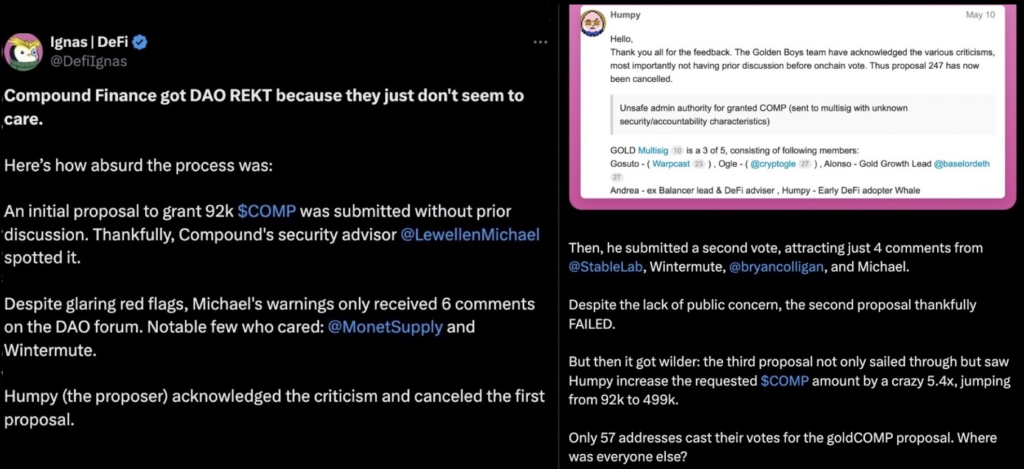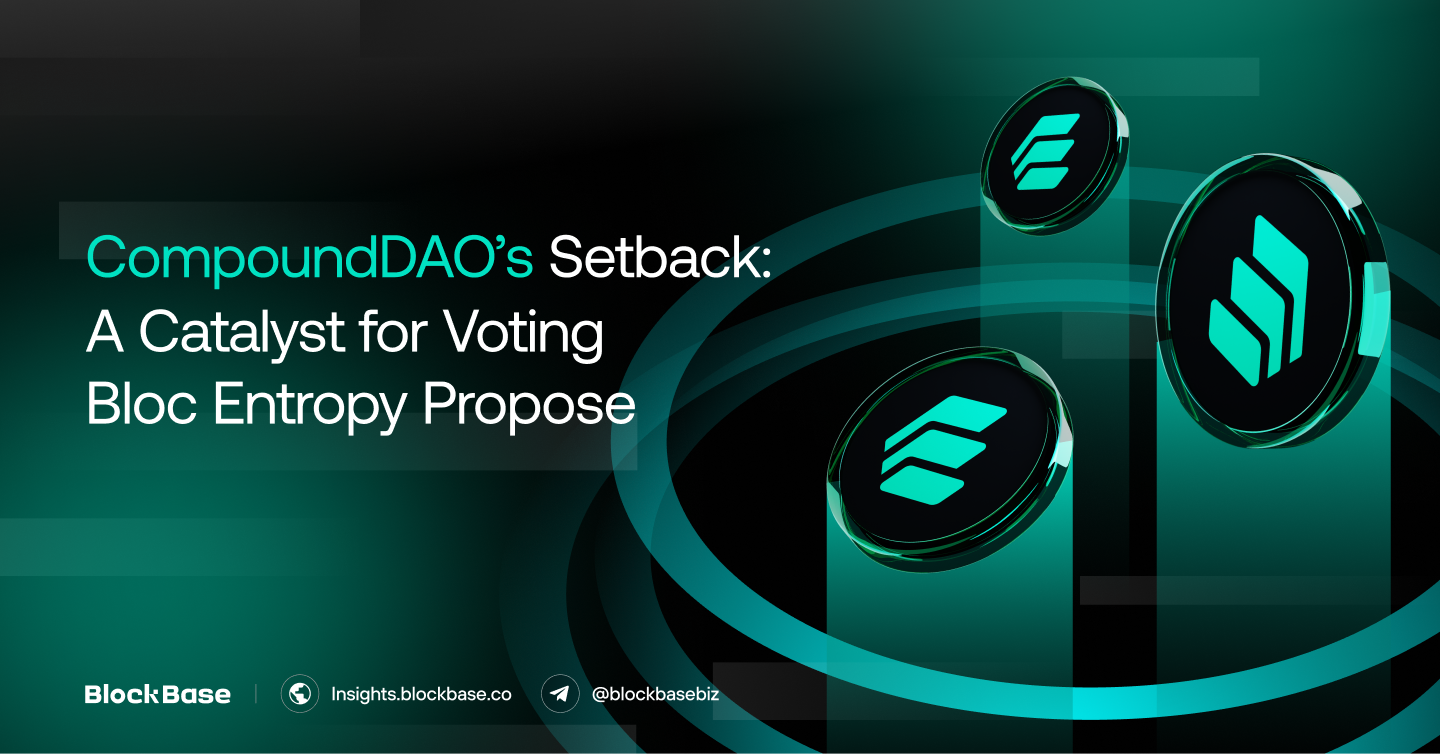On July 28, 2024, CompoundDAO’s governance suffered a blow when Proposal 289 allowed a group known as the “Golden Boys” to take control of $24 million from the DAO’s treasury. Though the proposal wasn’t inherently malicious, it exposed a serious flaw in the DAO’s governance system—voter apathy. With only 7% of token holders participating, this case sheds light on the limitations of existing decentralization metrics like the Nakamoto Coefficient, which often misses risks related to how voting power is controlled.

1. Token-Centric Metrics Are Insufficient
Common metrics like the Nakamoto and Gini Coefficients primarily track how tokens are distributed across wallets, offering a simplified view of decentralization. They overlook critical governance dynamics, like who controls those wallets. Consider WhaleDAO and MinnowDAO—on paper, MinnowDAO appears more decentralized because its tokens are split across more wallets. However, if one person controls the majority of those wallets, real decentralization is a facade. This is exactly how the Golden Boys manipulated CompoundDAO ‘s voting mechanism, controlling multiple wallets but ultimately consolidating voting power.

These token-centric metrics also fail to account for practices like bribery, collusion, or even groupthink, which further concentrate power within DAOs. Measuring decentralization accurately requires more than just counting wallets; it needs to consider how influence is distributed and exercised.
2. Enter Voting Bloc Entropy (VBE)
A new approach, called Voting Bloc Entropy (VBE), addresses these gaps. The metric was proposed by Andrés Fábrega, Jay Yu, Amy Zhao, and Ari Juels. It is their creation and part of their research on DAO governance and decentralization.
2.1. What is VBE?
VBE doesn’t just look at token distribution—it analyzes voting patterns and forms clusters called “voting blocs.” These blocs highlight how power is aggregated within a DAO, making it easier to detect centralization risks.

In the CompoundDAO scenario, VBE would treat the Golden Boys as a unified voting bloc, regardless of how many wallets they used. VBE would also recognize the significant number of inactive token holders as part of an “inactivity whale,” representing a massive block of non-participation. By factoring in both active and inactive blocs, VBE provides a clearer view of real governance decentralization.
2.2. The Power of VBE
VBE isn’t just about identifying problems; it offers actionable insights for improving DAO governance. By highlighting how power is concentrated, DAOs can take steps to redistribute influence more equitably. For instance, delegation—a practice where token holders can delegate their votes—often reduces centralization. While one might assume delegation increases control by consolidating power, VBE shows that it can help combat voter apathy and decentralize decision-making by shrinking the inactivity whale.
2.3. Practical Application and IC3 VBE Dashboard
To help DAOs monitor decentralization, the IC3 VBE dashboard has been launched. This tool tracks VBE metrics across DAOs, enabling operators to observe changes in governance dynamics over time. By comparing VBE scores, DAOs can better understand how their governance compares to others and identify fluctuations that may signal issues. The dashboard provides an essential resource for tracking the health of decentralized governance.
Additionally, VBE can help tackle voter apathy. Clustering delegates into voting blocs, much like political parties, would allow token holders to align with specific groups representing their interests. This may encourage more active participation and foster greater community engagement.
3. A Path Forward for DAOs
VBE is only the beginning of improving DAO governance. As ongoing research continues to refine this metric, DAOs will have access to more sophisticated tools for analyzing and distributing voting power. The ability to prevent governance attacks like the CompoundDAO incident hinges on improving participation, reducing centralization, and fostering diversity in voting blocs.
For DAOs, decentralization is one of the most challenging aspects. However, with innovative metrics like VBE, DAOs can move closer to their transparent, inclusive governance ideal. As DAOs evolve, embracing tools like VBE will be key to ensuring that governance structures truly reflect the core principles of decentralization.
The information provided in this article is for reference only and should not be taken as investment advice. All investment decisions should be based on thorough research and personal evaluation.





